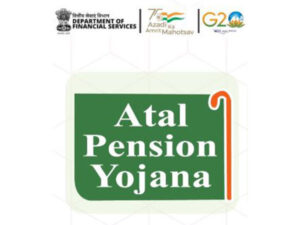Coal to remain a dominant source of India’s power generation over the next decade: S&P GCI
New Delhi [India], June 25 (ANI): India’s energy future is set to remain heavily reliant on coal, even as the country navigates challenges and opportunities in the realms of oil, LNG, and renewable energy.
According to a comprehensive outlook by S&P Global Commodity Insights (GCI), India’s strategic priorities in energy security, affordability, and sustainability are shaping its dynamic energy landscape.
Pritish Raj, Managing Pricing Editor for Asia Thermal Coal at S&P Global Commodity Insights, asserted that coal is poised to retain its status as a cornerstone of India’s power generation.
As one of the fastest-growing economies globally, India’s soaring power demand necessitates a substantial increase in coal consumption.
Raj emphasised, “As energy security becomes utmost priority of one of the fastest growing economies in the world, India’s power demand and, in turn, coal consumption will continue to rise exponentially over the next decade.”
Despite significant strides in domestic coal production, which is projected to reach between 1.5 to 1.7 billion metric tonnes by 2030, coal imports will remain vital due to ongoing challenges related to the quality of domestic coal and transportation inefficiencies.
Raj said, “We expect India’s domestic production to easily be in the range of 1.5-1.7 billion mt by 2030, and imports to stay stable at over 150 million mt over the next 5-6 years.”
Raj noted, “Investments in clean energy are in the right direction, but with the intermittent nature of renewables, higher cost in the development, production and transmission phase due to low scale will keep coal as a major driver of power generation.”
The intermittent nature of renewable energy and the higher costs associated with its development and transmission will ensure that coal continues to be a major driver of India’s power generation in the foreseeable future.
Joel Hanley, Global Director of Crude & Fuel Oil Markets at S&P Global Commodity Insights, highlighted India’s complex energy trilemma of ensuring security, affordability, and sustainability.
India’s ambition to become carbon neutral by 2070 necessitates a delicate balance between fostering economic growth and investing in sustainable energy solutions.
Hanley remarked, “India is committed to being carbon neutral by 2070 and is investing in more sustainable energy, such as hydrogen, as well as more accessible power grids but while that is happening, India’s economic development and growth will rely on oil.”
Affordability has been significantly bolstered by discounted oil trade with Russia and shifting dynamics in the global crude market.
Hanley elaborated, “India now sits very well positioned to take advantage of these changes to increase its levels of security and affordability. In all this, India needs solid pricing methods to ensure a transparent and robust benchmark for its economy, such as Platts Dated Brent and Dubai.”
A robust pricing framework, such as the Platts Dated Brent and Dubai benchmarks, is crucial for ensuring transparency and stability in India’s oil markets.
Kenneth Foo, Associate Editorial Director for Asia LNG at S&P Global Commodity Insights, reported that India has seen a notable increase in LNG imports, benefiting from shifting global LNG cargoes and more competitive pricing.
“With cargoes shifting away from Europe in 2024, Asian companies, including Indian importers, have benefitted from cheaper LNG imports this year. India imported 10.54 million MT over Jan-May this year, up 25 per cent from the same period in 2023. If LNG prices remain attractive against competing fuels like naphtha, LPG and fuel oil, there is an expectation that imports will continue to grow further,” Foo stated.
If LNG prices remain favourable compared to alternative fuels, imports are expected to continue rising.
Achieving India’s target of 15 per cent LNG in the energy mix by 2030 will require overcoming significant challenges, including securing long-term contracts with transparent pricing mechanisms.
Foo highlighted, “There is a potential risk of importers being locked into term contract prices that are out of sync with prevailing LNG prices when such contracts start from 2026 onwards. To remove price risk for LNG importers, creating an even stronger index link between LNG import prices and domestic gas prices would be desirable.”
Agamoni Ghosh, Managing Pricing Editor for Carbon Pricing, APAC at S&P Global Commodity Insights, discussed the critical need for India to balance economic growth with the imperatives of decarbonisation.
Ghosh said, “Being one of the fastest-growing economies in the world, India’s energy transition policies aim to balance the need for decarbonisation with energy affordability as the country will lean on more traditional energy sources.”
He added, “But given India’s ambitious net zero target of 2070, there is a need for a significant shift towards low carbon energy alternatives. Balancing the imperatives of growth and sustainability will be paramount as India navigates the future energy landscape.”
India’s emissions are expected to peak in 2043, with substantial contributions from coal power generation.
Key mechanisms driving India’s energy transition include establishing an emissions trading system, expanding renewable energy capacity, and promoting alternative fuels such as green hydrogen.
Hydrogen, in particular, is emerging as a key element in India’s carbon reduction strategy. Recognised as a sunrise sector, hydrogen is poised to accelerate decarbonisation and create export opportunities.






